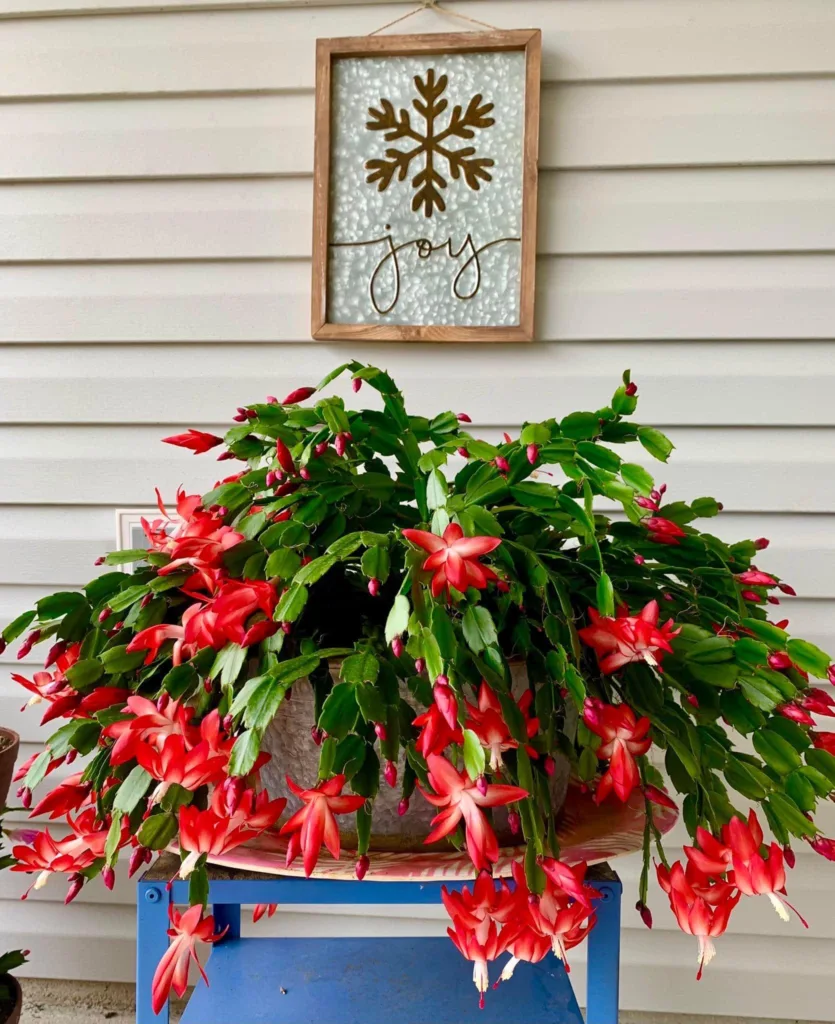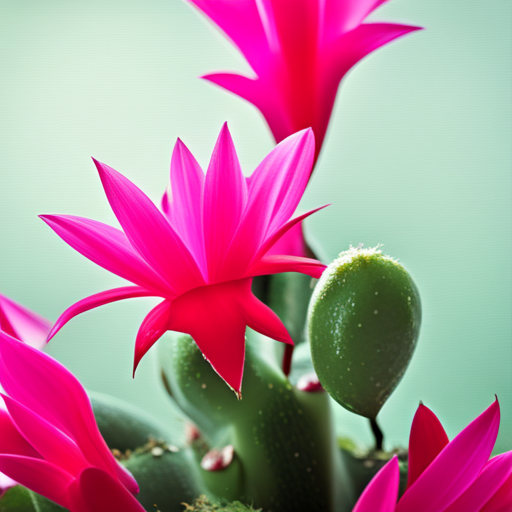Growing a Christmas cactus from seed offers a rewarding and exciting journey. Though it takes patience, this process allows you to nurture the plant from its earliest stage and enjoy each step as it matures. The Christmas cactus (Schlumbergera spp.) is known for its vibrant, holiday-season blooms, and growing one from seed makes these blooms even more special. Here’s a step-by-step guide to get you from seeds to blooms.
Step 1: Gathering Seeds
To start, you’ll need fresh Christmas cactus seeds. If you already have a mature Christmas cactus, you can collect seeds from it. Once your plant blooms, it may develop small fruit or seed pods. These appear after the flowers fade, taking several months to fully mature and turn red or pink, indicating readiness.
To harvest seeds, carefully remove the fruit from the cactus and split it open. Inside, you’ll find small seeds. Rinse them gently in water to remove any pulp, then let them dry on a paper towel. If you don’t have access to a mature Christmas cactus, you can purchase seeds from a reputable supplier. Quality seeds increase your chances of successful germination.
Step 2: Preparing the Soil and Pot
Christmas cactus seeds require a well-draining soil mix to thrive. To prepare, combine equal parts cactus potting mix, coarse sand, and perlite. This combination creates a light, well-draining medium that allows air to reach the roots and prevents waterlogging. Avoid heavy garden soil, as it compacts easily and holds too much moisture, which can lead to root rot.
Once your soil mix is ready, fill a shallow tray or small pot with it, leaving about half an inch from the rim. If you’re using a tray, make sure it has drainage holes. For the best results, use a sterilized soil mix or bake it at 200°F for about 20 minutes to eliminate any harmful bacteria or pests.
Step 3: Sowing the Seeds
With your soil prepared, it’s time to sow the seeds. Christmas cactus seeds are small, so sprinkle them lightly over the soil surface. Avoid burying the seeds deeply, as they need light exposure to germinate. Instead, press them gently into the soil using your fingers to ensure good contact.
After sowing the seeds, mist the soil with water to keep it moist, but not soaked. Using a spray bottle ensures the seeds don’t move or get displaced. Cover the tray or pot with a clear plastic lid or plastic wrap to create a humid environment. This cover retains moisture and warmth, both of which aid germination.
Step 4: Providing Proper Light and Temperature
Christmas cactus seeds require light to germinate, so place the tray in a bright location. An east-facing windowsill works well, as it provides indirect sunlight without exposing the seeds to harsh rays. Avoid direct sunlight, as it may scorch the delicate seedlings. If natural light is insufficient, especially in winter, you can use a grow light. Position the grow light about 12 inches above the tray and set it to provide 12-14 hours of light daily.
For successful germination, keep the temperature between 70-75°F. Christmas cactus seeds germinate best in a warm, stable environment, so avoid placing them near drafty windows or heating vents, which can create temperature fluctuations.
Step 5: Watering and Germination
During germination, maintaining consistent moisture levels is crucial. Check the soil regularly, and mist it with water whenever the surface feels dry. However, avoid overwatering, as excess moisture can cause mold growth or seed rot. You want the soil to stay damp but not soggy.
After a few weeks, tiny seedlings should start to emerge. Germination can take anywhere from three to six weeks, depending on the temperature and seed quality. Once the seedlings appear, remove the plastic cover to improve air circulation and reduce the risk of fungal issues.
Step 6: Transplanting Seedlings
As your seedlings grow, they will develop their first set of true leaves, resembling small versions of the mature Christmas cactus. When each seedling has two or three true leaves, it’s time to transplant them into individual pots. Choose small pots with drainage holes, as these allow excess water to escape.
Fill each pot with the same well-draining cactus soil mix used for germination. Carefully lift each seedling from the tray using a small spoon or your fingers, being gentle to avoid damaging the delicate roots. Place the seedling in its new pot and fill in around it with soil, pressing lightly to secure it.
Step 7: Providing Proper Light and Water for Growth
After transplanting, place your seedlings in bright, indirect light. An east-facing window works well, or you can continue using a grow light if needed. Christmas cactus plants prefer indirect sunlight and may suffer under intense, direct rays.
Water the seedlings whenever the top inch of soil feels dry, ensuring the pot drains thoroughly each time. Christmas cacti don’t tolerate standing water, so avoid letting them sit in saucers filled with water. Keeping the soil lightly moist during their early growth stages encourages strong root development.
Step 8: Fertilizing the Young Plants
After about three months, begin fertilizing your young Christmas cactus plants with a balanced, water-soluble fertilizer at half strength. Fertilize once a month during the growing season, which is typically from spring to early fall. Providing nutrients supports healthy growth and prepares the plants for blooming when they reach maturity.
Avoid fertilizing in late fall and winter, as Christmas cacti enter a rest period during this time. Too much fertilizer can lead to excessive foliage growth at the expense of blooms, so keep feeding light and infrequent.
Step 9: Encouraging Blooms
Christmas cacti usually take two to three years to reach maturity and begin blooming. Once your plants are mature, you can encourage blooming by creating conditions similar to their natural environment. In late fall, expose the cactus to cooler temperatures around 60-65°F and limit its light exposure to about 12 hours per day. This triggers the plant’s blooming cycle.
Keep the soil slightly drier than usual, but don’t let it dry out completely. After about six weeks, flower buds should begin to form. At this point, return the plant to normal light and temperature conditions and resume regular watering. Avoid moving the plant around, as changes in position or environment can cause buds to drop.
Caring for a Christmas Cactus Year-Round
Once your Christmas cactus starts blooming, care for it by providing indirect light and consistent moisture. After the blooming period, give the plant a rest by reducing watering and placing it in a cooler location for a few weeks. In early spring, move it back to a bright spot, resume regular watering, and begin light fertilization to support new growth.
Growing a Christmas cactus from seed takes time, but the reward is a beautiful, flowering plant that brings color to your home each holiday season. With consistent care and patience, your seedlings will mature into stunning Christmas cacti that you can enjoy year after year.
Please be sure to check out my Gardening Blog Post Page for more tips on all types of gardening. Including Seed Starting, Orchids, Water Gardening, Coldframe Gardening, Indoor Bulb Gardening, Hydroponics, Container Gardening, Mums, Herbs, African Violets, planting Bulbs, Flower Gardening, Vegetable and Fruit Gardening, Indoor Houseplants of all kinds, Cactus, Succulents, Hanging plants, Deer resistant plants and even Bird, Bee, Butterfly and Hummingbird Gardens!


